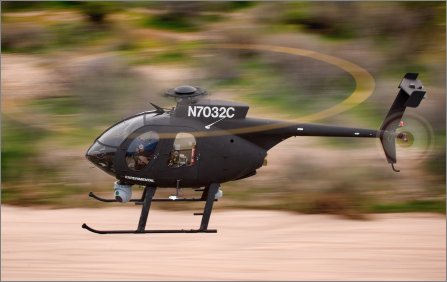Systems developed for 1999 army project to be reused as Boeing aims to show in-flight control from Black Hawk
Boeing Phantom Works plans to demonstrate in-flight control of its optionally piloted MD Helicopters MD530F-based Unmanned Little Bird helicopter from the cockpit of a US Army Sikorsky UH-60 Black Hawk.
|
A fully unmanned Little Bird will fly next year |
“We intend to provide this type of capability for a Black Hawk demonstration later in the year,” says Roger Hunthausen, Phantom Works director of strategic development for advanced army and rotorcraft systems. Speaking at the Helicopter Association of Australia’s Rotortech conference in Sydney late last month, he said Boeing is also interested in translating AMUST-D capability into a Eurocopter Tiger attack or NH Industries MRH90 transport helicopter to widen its potential market base.
Hunthausen says the US Army has realised the operational potential of having a UAV operate alongside a platform like the Apache. “In essence it acts as a wingman for the manned aircraft,” he says.
A follow-on demonstration involving the Unmanned Little Bird and an AH-64D is also being considered, with Boeing hoping to integrate AMUST-D-like capabilities into future block upgrades for US Army Apache Longbows as a standard mission feature. While the capability would add to crew workload, “it is something that is highly doable in current cockpits”, Hunthausen says.
Phantom Works plans to have a fully unmanned version of its so-called MD-5XX flying by January 2007. Its current two optionally piloted demonstrators are being upgraded with a new main and tail rotor system and modified gearbox to provide better lateral control at low altitude, with work expected to conclude by May.
Hunthausen says both demonstrators have been offered to the US Navy to support concept of operations research on UAV use from its Littoral Combat Ships. Boeing is also considering how the Unmanned Little Bird could be involved in co-operative operations in conjunction with the Boeing-Insitu Scan Eagle.
PETER LA FRANCHI / SYDNEY
Source: Flight International

















